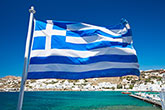LNG carriers: industry overview
In winter 2010, a lack of available LNG tankers made the business of securing short term deals more difficult for smaller shipping companies such as Golar LNG. The company has recently stated that revenues in the fourth quarter had taken a drop from $70.4 million in the third quarter, to $64.6 million, mainly due to the ending of charters Gimi and Khannur at the end of the third quarter. Whereas higher charter rates have helped this company’s shipping arm, a high level of global tightness in LNG vessel availability has meant that deals have fallen through when companies have not been able to secure ships after winning LNG supply tenders. Chris Graves, LNG Broker with EA Gibson shipbrokers points out that, “Owners feel that the tide has finally turned in their favour, and they will be looking to claw back some of the heavy losses incurred over the last few years.”
The tightness in availability of LNG carriers is mainly a result of Qatar’s move to increase flexibility by amplifying tanker chartering. On 24 February, for the first time, all six LNG berths at Ras Laffan port were occupied with new generation Q-Flex and Q-Max vessels, loading Qatari LNG cargos for various destinations around the world. Captain Feisal Saad, Ras Laffan Port Manager said, “The scene of six LNG vessels loading occupying all the LNG berths simultaneously is something that we will get used to seeing more often. This scene is only possible in Ras Laffan.” Ras Laffan Port has the capacity to extend to 10 LNG berths in the future.
The long-term outlook for the global LNG shipping industry is positive overall, and the global maritime industry is demanding the construction of increasingly large vessels to serve its requirements. In addition to the growing utilisation of the fleet of 54 Q-Max vessels (which have 80% more capacity than conventional LNG carriers and operate with 40% lower energy requirements) Netherlands-based Dockwise has been developing a new supersized class of maritime transport vessel, ‘Type 0 Super Vessel’ with an overall deck size of 275 x 70 m, a revolutionary bowless design and a carrying capacity of more than 100,000 t. The key market for this new vessel will be offshore structures between 50,000 and 100,000 t, and the company hopes that the new vessel with contribute to opening up opportunities with new industry players around the world and on a whole range of oil and gas offshore projects.
The LNG shipping industry as a whole is moving towards a broadening out in its interests. Yannis Calogeras, Product Manager LNG Carriers and Tankers, Bureau Veritas says, “The LNG industry is continuing to grow rapidly in all areas relating to floating LNG, but also we’re seeing a lot of interest in new avenues for the utilisation of LNG, particularly LNG as a ship fuel.” As environmental regulations continue to have a huge effect on notions of environmentally sustainable shipping, a lot of attention is inevitably going to focus on new improved methods for powering ships. DNV are currently devoting a lot of time to the discussion surrounding the development of LNG into a fuel for shipping. Lars Petter Blikom, Segment Director, LNG has pointed out, “Now there are 21 short sea ships operating on LNG, another 10 are scheduled for delivery within a year, and many, many more are being planned.” As the LNG fuelled fleet of vessels establishes a track record and cements its reliability and safety in the minds of ship owners, they may well increasingly look towards LNG fuelled ships as a real option. Wartsila has been developing a ‘duel fuel mechanic’ system for ship propulsion, which it predicts will be the next revolution in low emission LNG carrier propulsion technology. With orders already secured, these duel fuel engines are able to run constantly on LNG, marine diesel oil, marine gas oil, heavy fuel oil or biofuel. The technology is based on a medium speed, four stroke engine where gas is mixed with air at low pressure during the intake cycle. Giulio Tirelli, Marketing and Application Development Manager, Wartsila, claims that the LNG carriers with this propulsion configuration, “Were the only ones ordered after the world economic crisis, and re-confirm that the duel fuel gas burning technology remains the current state of the art technology for gas carrier propulsion systems.” The maritime industry has had its fair share of economic crisis recently, but as long as companies are supporting and driving technological advancements in the sector there is every reason to expect that the shipping industry will weather the storm.
You can read full length articles on these topics in the Spring issue of LNG Industry magazine. If you are a subscriber, you can log in to see the magazine online here.
Read the article online at: https://www.lngindustry.com/lng-shipping/04032011/lng_carrier_industry_overview/
You might also like
Saipem completes work on Alexandapoulis LNG terminal
Saipem has completed its construction of the independent natural gas system for Gastrade’s LG project off the coast of Alexandapoulis, Greece.

